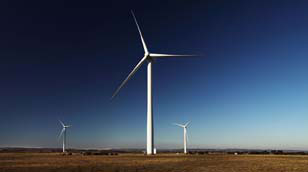Pros and Cons of Daylight Saving Time
Updated: 3rd August 2012
Daylight saving time (DST) is currently used in approximately 70 countries worldwide. The basis for DST is to improve the match between the daylight hours and the activity peaks of a population.
The benefits of DST are decreased electricity consumption, a slight drop in the number of traffic accidents and crime. In addition to that, DST increases recreational time in the afternoons and boosts economy. The disadvantage are minor compared to the advantages. Some prefer not to change the clocks twice a year. However, there are also actual costs as well as gains. According to a academic study in 1999, the spring and fall time changes costs 60 billion US dollars to investors. The adjustments make individuals "slightly impaired" according to the researchers. The 1986 DST extension in the US benefited Barbecue Industry Association, the American Association of Nurserymen and convenience-store owners by 135 billion US dollars (Brearton, 2011). With these figures DST is a gold mine. Below is a categorized presentation of the pros and cons of daylight saving time.
Pros
1. Daylight saving time decreases residential electricity usage
One of the benefits of DST is decreased electricity demand which is highly affected by the geographical location. In some locations there may be positive effects, on others not. Thus the reason for DST is still a reduction in electricity usage but there are also recreational benefits, boosting of the economy by increased consumption and a reduction of pedestrian accidents and crime.
A study at 224 locations around the United States showed that DST increases yearly residential energy costs by 0.147% on average when DST with standard time is used compared to year-round standard time. If the clocks were moved forward by one hour during standard time and during daylight saving time, a slight reduction in total residential energy consumption was noticed. In a case where daylight saving time was observed year-round, no significant effects were noticed on energy usage or in electricity costs (Rock, 1997).
Ramos and Diaz (1999) showed that the implementation of DST in Mexico in 1996 brought overall electricity usage savings of 0.83%. The savings came exclusively from residential buildings. No changes in electricity usage were noticed for industrial or commercial customers. The annual maximum demand was reduced by 2.6%.
A research (Reincke and Van den Broek, 1999 cited in Aries and Newsham, 2008) conducted in 15 countries in European Union revealed that DST would reduce the electricity demand for lighting in the evening for households by 1% or less, and increase demand for heating by 9%. In their conclusion, they estimated an overall positive but small effect of DST, with overall electricity savings ranging from 0% to 0.5%, depending on the country. Often the use of extra air-conditioning in warmer evenings is not accounted for, and could increase the overall electricity consumption.
2. DST decreases the number of traffic accidents
DST means fewer car accidents because more people are driving when the sun is out, which is safer than in the dark (Avis, 2005). A study by Fergison, et al. (1995) discovered a slight decrease in the number of pedestrian traffic accidents in the United States if DST is followed year-round. In the U.S. most notably the number of crashes increased when the light levels changed from daylight to twilight and decreased when twilight changed to light. The effects were the greatest for pedestrians. The study also noted that during afternoon hours, the light conditions were the cause of the fatal crashes rather than the clock times. The fatal accident increase for pedestrians were much larger than for vehicle occupants when the light conditions changed from light to twilight. For pedestrians the increase in fatal accidents were 300%.
Fergison, et al. (1995) found that if DST would have been observed year-round from 1987 to 1991, there would have been 145 fatal pedestrians accidents and 35 fatal vehicle occupants accidents less in each year. As a percentage figure, the pedestrian accidents would have decreased around 1%. Coate and Markowitz (2004) ended up with very similar results as Fergison, et al. (1995).
3. DST reduces crime
It has been suggested that DST is associated with a fall in crime. People return home from work and school and complete more errands and activities in the daylight, their exposure to some crimes lessens, since these are more common in the dark than in the daylight (Worthington, 2005 and Committee on Space Science and Technology, 2001).
On the other hand The Home Office in the UK commented in the mid nineties that "although many crimes are committed when it is dark, definite conclusions are difficult to draw as regards the effect of darkness on overall levels of crime. Increasing daylight may for example have different effects for different crimes" (The Royal Society for the Prevention of Accidents (RoSPA), 2005).
British Crime Survey (BCS) between 1988 and 1992 show that over half of criminal offences take place during the hours of darkness in the late afternoon or evening, far more occur at dusk rather than dawn. (RoSPA), 2005).
4. DST increases recreational time
During DST, sun sets one hour later, providing more sunlight for after work outdoor activities.
5. DST increases economic activity
A study conducted in European Union showed that DST increases leisure sector turnover by 3% for the EU as a whole (Aries, Newsham, 2008).
6. Daylight saving time brings a smile to everybody's faces by providing more light and sunshine
Cons
1. The change to DST may disturb the rest-activity cycle
Transition into DST may have a disturbing effect on the rest-activity cycle in those healthy adults who are short-sleepers or more of the evening type (Lahti, et al., 2006).
Even though the short-sleepers or more of the evening type individuals may get disturbed by the transition to DST, there was no significant effect in the sample as a whole (Lahti, et al., 2006).
The participants were divided into groups by the preferred daily activity patterns as morning, intermediate or evening type and the preferred length of sleep. Long-sleepers needing more than 8 hours of sleep per night and short-sleepers needing 8 hours or less sleep per night (Lahti, et al., 2006).
DST affects everybody in a society, but most probably there are no long term effects on the circadian rhythms or rest-activity cycles in healthy individuals. In the case of patients the effects of the transition into DST may be stronger (Lahti, et al., 2006).
2. DST increases fuel consumption hence atmospheric pollution
On the basis of a traffic analysis, it has been shown that the DST applied in summer months, causes a rise in evening traffic and creates an increase in fuel consumption and thus a higher pollution level in the atmosphere (Hecq, Borisov, Totte, 1993).
No Effects
1. DST does not affect daily hospital visits neither manic episodes
A research (Lahti, Haukka, Lönnqvist, Partonen, 2008) showed that the DST change in spring and autumn does not increase hospital treatments for accidents nor does it increase manic episodes. The data used was patient records from the Finnish hospitals consisting a time period from 1987 to 2003 one week before and after the daylight saving time changes.
References:
Aries, M.B.C., Newsham, G.R. 2008. Effect of daylight saving time on lighting energy use: A literature review. Energy Policy, 36 (6), 1858-1866.
Avis, C., 2005. Daylight Saving Time Saves More Than Time. Business Perspectives 17. 1 (Spring 2005): 16-19.
Brearton, S., 2011.
Daylight saving or expense? CA Magazine, Mar2011, 144:2.
Coate, D. and Markowitz, S., 2004. The effects of daylight and daylight saving time on US pedestrian fatalities and motor vehicle occupant fatalities. Accident Analysis and Prevention 36:3, pp. 351-357.
Fergison, S. A., Preusser, D. F., Lund, A. K., Zador, P. L. and Ulmer, R. G., 1995. Daylight Saving Time and Motor Vehicle Crashes: The Reduction in Pedestrian and Vehicle Occupant Fatalities. American Journal of Public Health 85:1, 92.
Hecq, W., Borisov, Y., Totte, M., 1993. Daylight saving time effect on fuel consumption and atmospheric pollution. The Science of the Total Environment, 133:3, pp. 249–274.
Lahti, T. A., Haukka, J., Lönnqvist, J. and Partonen, T., 2008. Daylight saving time transitions and hospital treatments due to accidents or manic episodes. BMC Public Health 2008, 8:74.
Lahti, T. A., Leppämäki, S., Ojanen, S., Haukka, J., Tuulio-Henriksson, A., Lönnqvist, J. and Partonen, T., 2006. Transition into daylight saving time influences the fragmentation of the rest-activity cycle. J Circadian Rhythms 2006, 4:1.
Reincke, K.-J., Van den Broek, F., 1999. Summer time, thorough examination of the implications of summer-time arrangements in the Member States of the European Union. Executive summary, Research voor Beleid International (RvB) for the European Commission DG VII.
Ramos, G.N., Diaz, R.A., 1999. A methodology to classify residential customers by their pattern of use. In: Proceedings of the Power Engineering Society Summer Meeting, vol. 1. IEEE, pp. 226–231.
Rock, B.A., 1997. Impact of daylight saving time on residential energy use and cost. Energy and Buildings, 25 (1997), pp. 63–68.
[online]:
Energy Conservation Potential Of Extended And Double Daylight Saving Time. 2001. [online] Committee on Space Science and Technology. Available from: http://commdocs.house.gov/committees/science/hsy73325.000/hsy73325_0.HTM [Accessed 31 July 2012]
The Royal Society for the Prevention of Accidents (RoSPA), 2005. [online]
Single/double summer time. Position paper. Available from: http://www.rospa.com/roadsafety/info/summertime_paper.pdf [Accessed 31 July 2012]
Worthington, A., 2005. [online]
Business expectations and preferences regarding the introduction of daylight saving in Queensland. Discussion Paper No. 145. Economic Analysis and Policy 34 (1), 1–18. Available from: http://ro.uow.edu.au/cgi/viewcontent.cgi?article=1020&context=commpapers [Accessed 31 July 2012]



